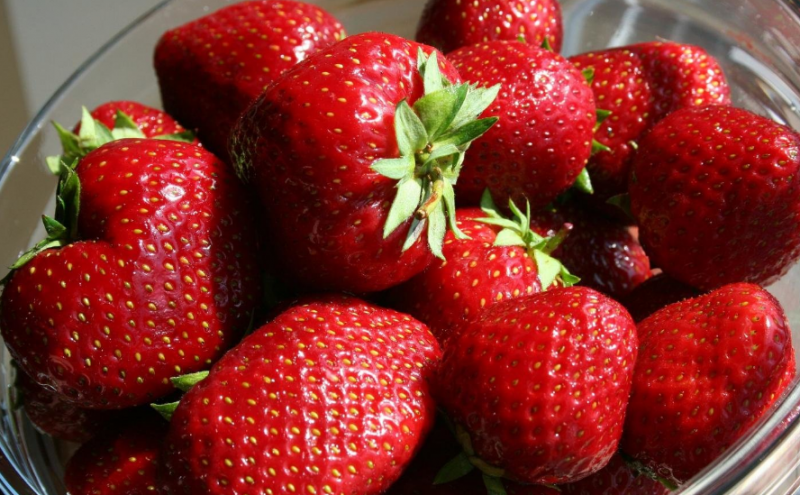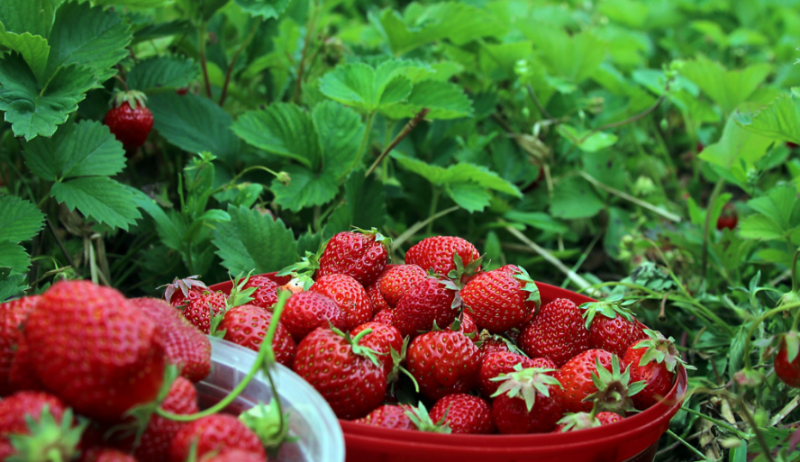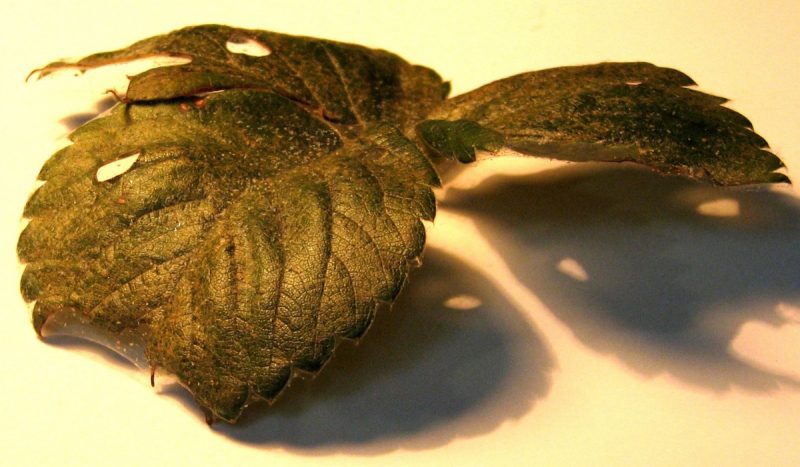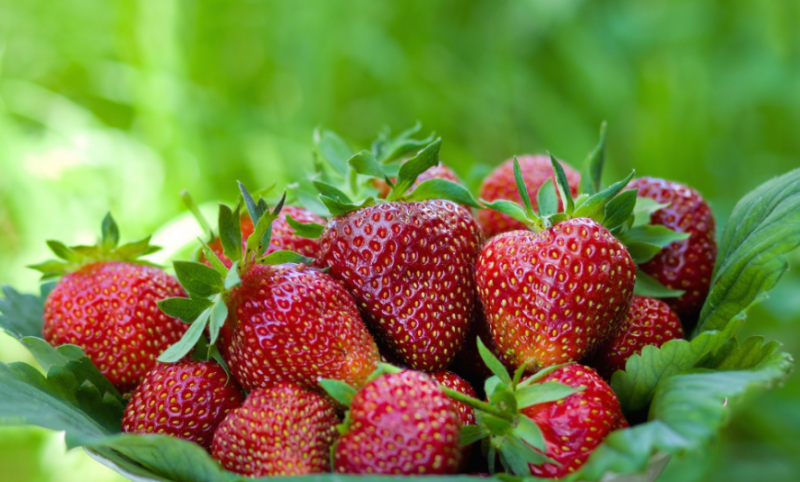Strawberry Victoria was bred in Holland, from where Peter the Great brought it to our country.
Material Content:
Description of the strawberry variety Victoria
In fact, this strawberry is strawberry. Gives a crop only once. The variety is very thermophilic and will not take root in regions with a harsh climate. Otherwise, this culture is very unpretentious.
Brief description of the variety:
- has tall bushes, strong, elastic leaves;
- berries of a bright red color;
- the fruits are incredibly sugary, aromatic, very large.
This large-fruited variety is resistant to many diseases, but prone to white spotting. Of the pests, only a strawberry tick is capable of attacking Victoria.
Useful properties of berries
Victoria has a lot of useful properties compared to other types of wild strawberries.
- Firstly, eating berries helps fight overweight.
- Secondly, strawberries contain a lot of antioxidants, which are excellent in the prevention of cancer and protect cells from aging.
- This strawberry contains a record amount of folic acid, especially necessary for the female body.
- The use of berries improves memory, saturates the body with vitamins and minerals, helps to establish the work of the digestive tract.
Outdoor landing
The first thing to do when deciding to plant Victoria on your site is to determine the timing. In the middle zone, landing in spring is preferable, in the southern regions in autumn. The fact is that in the southern regions autumn is warm and usually lingering, and the plants manage to gain strength before winter.
Spring in the southern regions is short, and immediately after the snow melts, summer sets in pretty quickly, so seedlings can simply burn out in the sun. In the middle lane, on the contrary, spring is usually warm and long, and autumn is short and cold.
Strawberries are planted on the site after legumes, garlic and onions. The place should be well lit. Ideally, if the site will be selected in advance and seeded with green manure.
- Dig the site and manually select all the roots and weed grass.
- When the landing site is leveled by a rake, mark holes. The pits should be deep and wide enough. The distance between them is left at least 30x50 cm.
- Rotted manure and compost, as well as some ash, are added to each planting hole.
In the evening or on a cloudy day, they begin to plant outlets.
This requires:
- Place a seedling in each well.
- Align the bush so that the growth point is just above the soil level. Too deep or high planting will result in strawberries not bearing fruit.
- Then the seedling should be covered with soil and spilled well.
- After planting, the bushes should be mulched. This can be done with fallen leaves, peat or straw. The mulch layer should be about 5 cm.
The next day you need to inspect the beds. If some outlets are too deeply buried in the ground, they will need to be lifted. Too high planted bushes sprinkled with earth.
Strawberry Care
The productivity and quality of berries directly depends on how competently the strawberry care will be carried out.
- Mustache and peduncles. Mustaches must be regularly removed, as the bushes will spend energy not on ripening berries, but on forcing out young outlets. In the first year after planting, all peduncles should be removed so that the strawberries are well rooted and strengthened.
- Watering. Immediately after planting and until the very beginning of flowering, Victoria does not need frequent watering. Watering only as the land dries, trying not to fill too much. After watering, be sure to loosen the ground and remove weed grass. If the summer is dry, you need to water the strawberry plantation every 10 days. Watering during flowering and fruiting is especially important.
So that the berries do not rot, many gardeners arrange drip irrigation systems. So the water is supplied directly to the roots. It is not worth watering strawberries by sprinkling.
- Fertilizer. The correct feeding of the beds is very important. But most importantly, fertilizers should be applied sparingly. If the bushes are overfed, they will begin to actively grow green mass to the detriment of fruiting. Garden strawberries do not need fertilizer immediately after planting. But starting from the second year, it is necessary to add superphosphate and nitrate. Plants are also needed for potassium. Each fertilizer is consumed in 50 g per 10 squares of beds. It is advisable to apply top dressing after watering or rain. After fertilizing, the earth is again well shed.
- Preparing for the winter. This procedure is very important for such a strawberry, which, unlike other varieties, should winter with leaves. Autumn processing of strawberries with nutritious compounds is carried out, and all mustaches are also removed. Shelter "Victoria" for the winter can be humus or straw, spruce litter. In the spring, shelter is removed with the onset of the first heat.
Read also:growing and caring for strawberries
How to increase productivity
Fertilizers will help to significantly increase productivity and get large fruits. You can use organics and make bird droppings. To do this, you need to fill in 10 l of litter with 30 l of water and insist for at least 5 days. Then the slurry is diluted with water at a rate of 1:20 and poured with a solution between the rows.
Before the ripening of the berries, the beds are fertilized with a solution of boric acid and zinc sulfate.
You can also increase the yield of Victoria if you remove the extra leaves. It is especially important to prune the foliage that covers the ripening berries from the sun. You can fearlessly remove a third of the leaves from the bush. Superfluous are the mustache, taking away forces from plants.
Protection against diseases and pests
The threat for this variety of strawberries is white spotting. This viral disease manifests itself in the spring, as well as during the active growth of plants. Symptoms of the disease - the appearance of reddish spots on the leaves, the center of which gradually turns white. To cure the bushes should be sprayed with a solution of Bordeaux fluid.
A viral disease appears due to excessive moisture. Therefore, it is so important to observe the irrigation regime.
There are practically no insects that attack Victoria. The only exception is the strawberry mite. The attack of the pest leads to drying and yellowing of the bushes. The fruits begin to dry and fall.
Against strawberry mites, it makes no sense to use insecticides, since the parasite very quickly adapts to them. It is necessary to try to get rid of insects by spraying the plantation with Omayt or Fitoverm drugs.
Common growing problems
The main problem that a gardener may encounter when growing this variety is the lack of fruit.
Immediately it is worth considering that "Victoria" can give berries only 4 - 5 years. After this period, the plantation will have to be transplanted.
- Perhaps, at the end of the season, the berry was not fed, and so the next year he did not give fruit or they were very small.
- Return frosts in May can ruin the buds, and as a result there will be no fruits. To avoid freezing strawberries, when forecasting a cooling of the beds should be covered.
- If cool, rainy weather comes out in spring and early summer, then bees may not pollinate inflorescences.
- Also, "Victoria" may not bear fruit if it was planted too late in the fall. In this case, the flowers simply will not have time to form, since the plant will spend a lot of energy on rooting.
Growing "Victoria" in its own garden is a grateful job, because this berry with proper care gives consistently high yields.

















